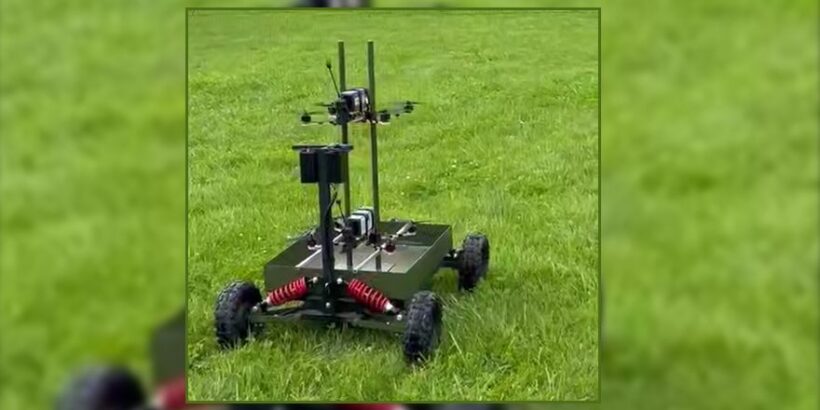The Archipelago 2025 forum in Skolkovo demonstrated the “Argus” platform integrated with the “HERMES 2.0” ground control station (GCS), enabling operators to deploy drone swarms to operational areas, maintain them in standby mode for several days in ambush positions, and launch coordinated attacks upon receiving mission commands. This development was announced by NSU Hermes developers on their Telegram channel.
“The Argus platform can be configured as an unmanned ground vehicle, mothership drone, or unmanned surface vessel equipped with various drone types. In this demonstration, we showcase the Artemida quadcopter. All units are equipped with HERMES hibernation boards featuring sleep mode capability, or more simply, ‘loitering mode.’ System control is managed through the central component – the NSU HERMES 2.0 ground control station. Visitors can observe and test this swarm management system at the ‘Drone Garage’ section of the Archipelago 2025 forum,” developers told Aviation of Russia website.
The NSU HERMES 2.0 features a compact form factor and includes an integrated transmitter for seamless integration with “loitering drones.” The system enables multiple UAVs to operate as a collective swarm under centralized control. Aircraft enter hibernation mode with minimal power consumption, maintaining readiness for operator-commanded reactivation over several days. The exact duration of standby capability remains classified. A single control point can activate or deactivate all drones within the swarm.
Drones execute coordinated group strike operations. Within the swarm configuration, select drones function as communication relays, extending operational control range, while others serve as sensor platforms for intelligence, surveillance, and reconnaissance (ISR) missions.
Communication operates across multiple frequency bands simultaneously – between two to four concurrent channels. This multi-band approach enhances resistance to jamming and electronic warfare (EW) countermeasures. Control range reaches 28 kilometers (17.4 miles) for quadcopters and up to 100 kilometers (62 miles) for fixed-wing reconnaissance UAVs. Operational radius can be extended through airborne relay systems.
Hibernation integration within the drone swarm management system allows single operators to transition aircraft into power-saving mode and instantly reactivate them. This capability enables effective covert deployment of large quantities of loitering munitions within combat zones. Single-operator swarm control reduces personnel requirements and enables new tactical scenarios based on collective drone behavior and multi-layered communication architecture.
All system components are manufactured domestically in Russia. “The ground platform, Artemida drones, and NSU Hermes systems are all produced at our Russian facilities. We outsource nothing to China. We support the front lines while developing domestic industry – this is our mission,” company representatives stated.
The comprehensive military system presented at the forum demonstrates the trend toward increased autonomy and coordination in unmanned systems designed for practical application in complex, extended combat operations. According to developers, the NSU HERMES 2.0 is currently deployed in the special military operation zone.
Technical Specifications Summary:
• Control Range: 28 km (quadcopters), 100 km (fixed-wing UAVs)
• Communication: Multi-band operation (2-4 simultaneous frequencies)
• Power Management: Extended hibernation/standby capability
• Architecture: Centralized swarm control with distributed relay network
• Applications: Coordinated strikes, ISR operations, loitering munitions


